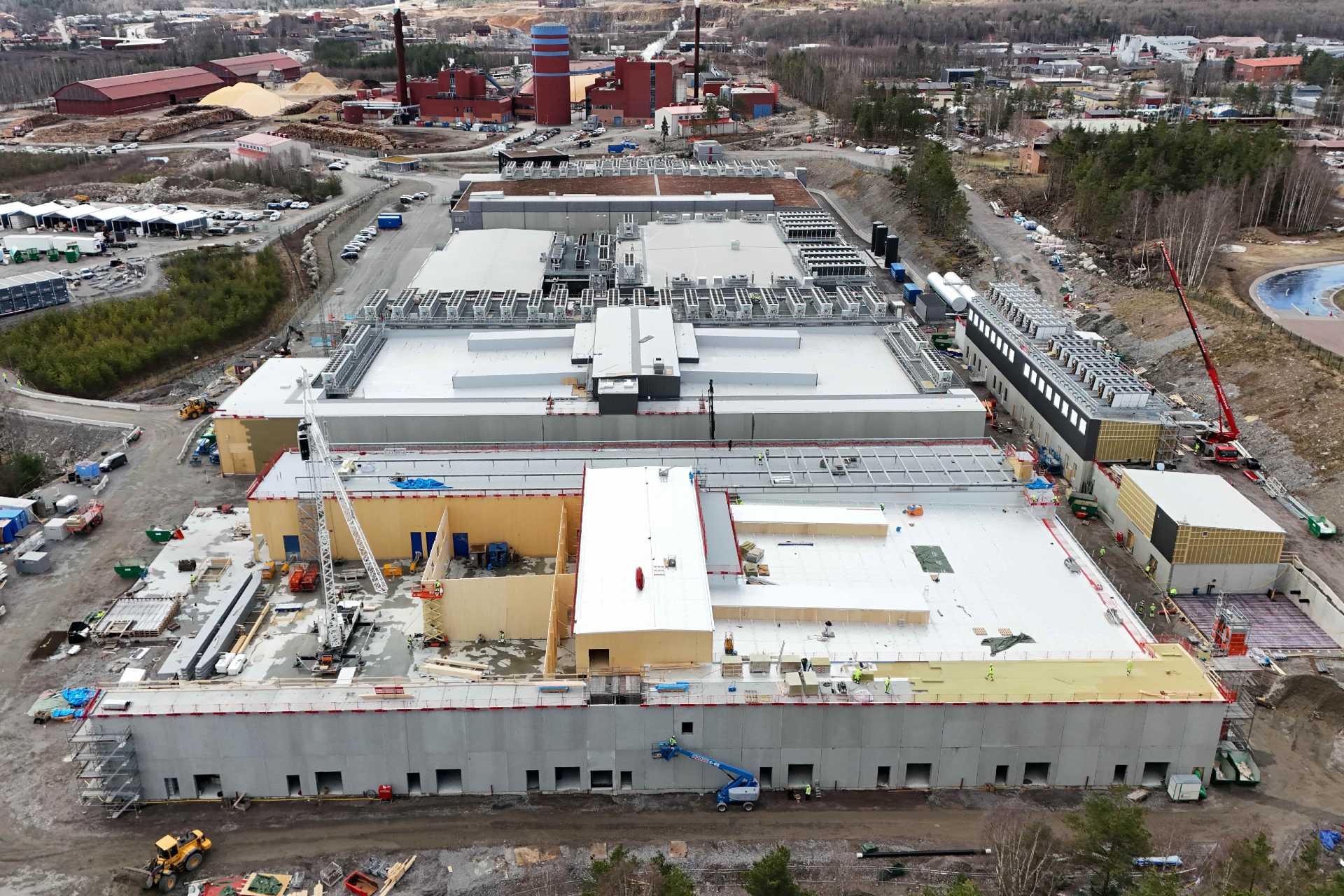When the University of York needed to replace its ageing Viking supercomputer, a shift to Scandinavia may not have been the obvious choice. We talked to Dr Emma Barnes, Head of Research and Faculty IT, about the choice of Sweden as the home for Viking II.

The original Viking computer was based in Leeds. Why did York University choose Sweden for its new facility?
One of the biggest drivers was lowering the environmental impact of our research. High-performance computing (HPC) is a vital research tool, but it consumes a lot of energy and produces a lot of heat. The estimates vary, but data centres are responsible for around 1.5% of global energy consumption, and this could rise to 8% by 2030. The move to EcoDataCenter in Sweden enabled us to benefit from a data centre that is entirely powered by renewables.
You said you had a use for the heat…
The excess heat from the data centre is extracted to dry wood and create pellets which then become a sustainable energy source. (When wood pellets are sourced from sustainable woodlands they are considered carbon-neutral because the CO2 emissions from burning them are equal to the CO2 absorbed by the tree as it grows.)
How exactly is it powered? Do you have on-site renewables or maybe a CPPA?
The data centre is located outside the city of Falun in Sweden, an area which has one of the cleanest electricity grids in the world. In Sweden the energy mix has a base of hydropower plus solar, wind and some nuclear in the south. This means the data centre can draw its energy from the regular grid without needing to sign a power purchase agreement or invest in on-site renewables. It is located close to generation sources, which reduces the natural losses you get with transmission over long distances.
The data centre buys its energy from the local energy company and gets the renewable status validated with certificates, similar to REGOs in the UK, which get checked through Sweden’s official energy agency. The energy company is actually owned by the local municipality, so our energy purchase is a boost for the local economy.
What else makes the facility greener?
This is reportedly the first data centre in the world that’s made of wood. The buildings have concrete foundations and some steel supports, but the rest is basically wood. The timber is locally sourced as well, which further reduces the emissions that went into building it. Another nice thing about wood buildings is that they are quicker to build, which means it’s easier to expand the facility if needed.
Clearly the growing carbon footprint of data centres is becoming a global problem. How would you solve it?
We need to start thinking differently about data centres. Right now we see them as something where we put electricity in, it drives our computers and it generates waste heat, giving us the problem of cooling. But actually, we should be seeing them as a heat source. They don’t have to sit in the middle of nowhere; they can sit in the middle of a city and power district heating.
And then you have a more symbiotic relationship; the electricity that heats your home doesn’t go directly to your home. Instead it goes to a data centre and is converted to thermal energy there. Or rather than heating homes it could be put to other uses, like ours dries out wood pellets. There’s a great example in Devon where a data centre heats the local swimming pool. So this is the new mindset we need to have: data centres are just giant heaters!
Wouldn’t it be better to try to reduce the power consumption and waste heat of data centres in the first place?
The need for data storage, data processing, graphics generation etc is growing and I can’t see it peaking in the next five to 10 years. Artificial intelligence and machine learning are coming into the mainstream, lots of people are discovering the possibilities of ChatGPT or A.I. image generation. Yes, people are trying to make their code more efficient and we should continue to do this, but those efficiencies can be cancelled out by the huge increase in uptake of this technology. So it’s unrealistic to only focus on reducing the energy consumption of data centres. It’s better to focus on using their potential as heat sources and making sure they have the greenest possible energy sourcing.
What advice would you give a business that’s consuming a lot of energy with its data centres? How can they reduce their carbon footprint in that area?
I would suggest two options: either move your data storage to the cloud if that’s possible, or move some of your computers to a site like this one in Sweden.
Why Sweden?
Because the grid electricity is greener here. In 2022 nearly 70% of Sweden’s electricity came from renewables, and that share is growing. (In the UK it’s closer to 40%.) But it’s not just that. Electricity is cheaper here, so you could potentially see a cost saving as well as the sustainability benefits, depending on the contract you sign.
Also, don’t overlook the weather! In a colder climate you need to consume less energy on keeping servers cool!
If a move to Sweden is too drastic, what else can businesses do?
Offsite is better, but it’s not always possible. We still have some data centres based in the University of York that need to stay put, so we’ve been doing a push to reduce their footprint. We did a full audit of what’s on those computers and got rid of unnecessary data and processes. Moving to Sweden was a big change but little things can make a big difference too. Just getting into better habits like getting people to switch their computer off at night. Over a long period of time, small things add up.
What would you do to reduce the environmental impact of computing if you were Prime Minister for a day?
I would work on improving the traceability of purchased energy so there’s no more greenwashing. It’s great if a business can buy its own renewable assets, but many can’t afford it and they deserve to have more clarity on what they buy from the grid. People increasingly care about where their energy comes from, whether they’re a domestic or a business customer.
Can you tell us what research projects Viking II is currently being used for?
It’s only been live for about six months and it’s already hitting a high level of utilisation: around 75-80%. It is powering some very useful and interesting research, from environmental studies to health research . Being a university for the public good is one of York University’s key values. So when our academics are doing climate research, we don’t want their computing to be powered by fossil-fuel sources. Ultimately it’s very important to us that we don’t contribute to the problem – we want to be part of the solution.













